A practical comparison between open-back and closed-back headphones.
While there are thousands of different headphone models, most of them can be categorized as either open-back or closed-back based on their design.
There are stark differences between the two designs that will serve some listeners better than others, including privacy, soundstage, comfort, and overall performance. All this can be overwhelming for any new audiophile.
This article dives into a practical comparison between open-back and closed-back headphones to help you determine which is best for your needs.
- Open-Back vs. Closed-Back Headphones: What’s the Difference?
- Pros and Cons of Open-Back Headphones
- Pros and Cons of Closed-Back Headphones
- Pros and Cons of Semi-Open Headphones
- Open-Back and Closed-Back Headphones: Which Is Better?
- Which Design Should You Buy?
- Why Do Audiophiles Like Open-Back Headphones?
- FAQ
- Open-Back vs. Closed-Back Headphones: What’s the Difference?
- Pros and Cons of Open-Back Headphones
- Pros and Cons of Closed-Back Headphones
- Pros and Cons of Semi-Open Headphones
- Open-Back and Closed-Back Headphones: Which Is Better?
- Which Design Should You Buy?
- Why Do Audiophiles Like Open-Back Headphones?
- FAQ
Open-Back vs. Closed-Back Headphones: What’s the Difference?
On open-back headphones, the headphone cups leave the back of the drivers exposed to the outside environment, allowing environmental noise to leak in and audio to leak out.
On closed-back headphones, the headphone cups cover the back of the drivers, passively blocking out environmental noise and containing all audio output directly around the listener’s ears.
There are also semi-open headphones, which combine elements of both closed-back and open-back headphones. Semi-open cups are mostly closed but have small vents that allow for some degree of airflow around the drivers.
You can read about their specific pros and cons below to determine whether open-back or closed-back headphones are right for you.
Pros and Cons of Open-Back Headphones
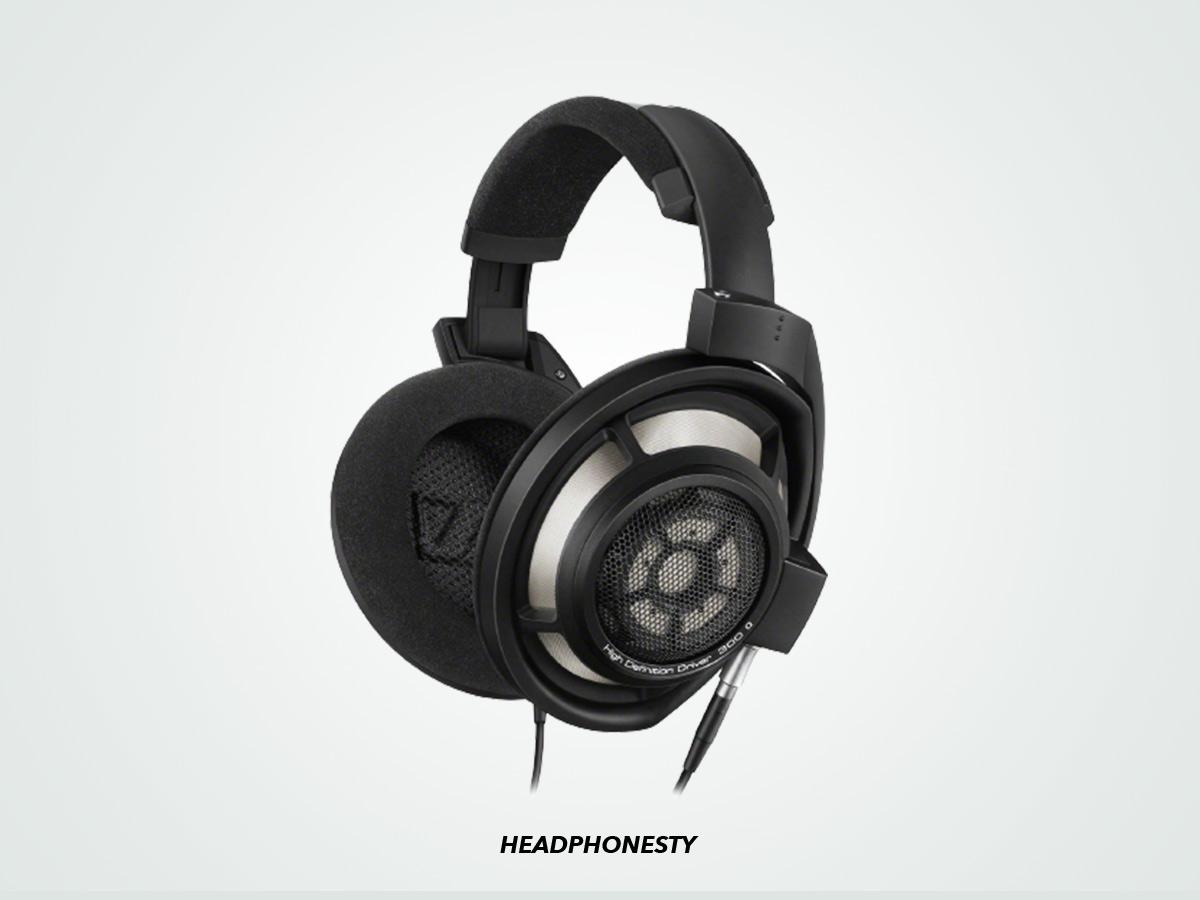
- Breathable
- Less ear fatigue
- Vivid stereo image
- “Natural” sounding
- Sound leakage
- Poor noise isolation
- Weaker bass response
From the perspective of simple comfort, the airy design of open-back headphones alleviates issues of sweaty and achy ears from heat and pressure buildup during long listens. But of course, there are plenty of acoustic benefits offered by open-back headphones as well.
As sound escapes from the cups on open-back headphones, it interacts with the upper half of a listener’s body and their surrounding environment. This is how you naturally perceive sounds when you’re not wearing headphones, which is why some people say open-backs sound more “realistic.” This quality is also responsible for producing spacious soundstages and stereo imaging.
However, ample outside noise leaks into them while your audio loudly leaks out. If you plan on listening to music in noisy environments or around other people, open-back headphones likely aren’t for you.
Another drawback that some, though not all, open-back headphones have is a weaker bass response. Low frequencies find intensity and extension from the sealed cups on closed-back headphones, but often lack a slamming impact on open-back headphones.
Pros and Cons of Closed-Back Headphones
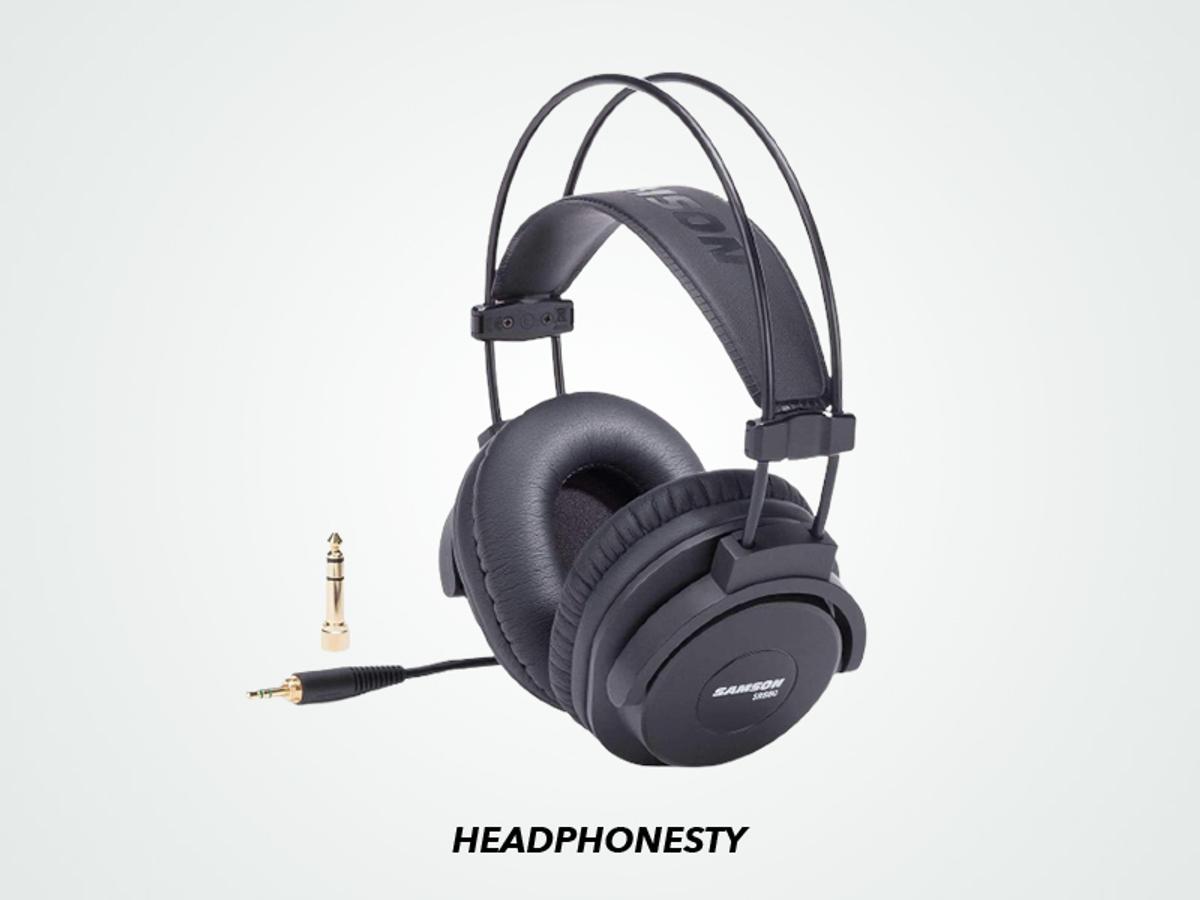
- Isolation from external noise
- Minimal sound leakage
- Extended low end
- Immersive listening experience
- Less breathable
- Cup resonance
- Flat stereo image
Unlike open-backs, closed-back headphones do a good job of keeping audio in and environmental noise out. This offers a listener the immersive sensation of being in their own “bubble” of sound, separate from the outside world.
Another benefit of closed-back headphones is their superior bass response. Their cups seal off the area around a listener’s ear, producing an ideal space to transmit deep and forceful bass frequencies.
Of course, the sealed cups on closed-back headphones aren’t always ideal. They’re as good at trapping body heat as they are at containing your music. This can lead to uncomfortably hot and sweaty ears during long listening sessions.
But while they may have an easier time with bass frequencies than open-back headphones, the sealed cups on closed-back headphones can sometimes produce unwanted resonance or phase issues that muddy your music.
Pros and Cons of Semi-Open Headphones
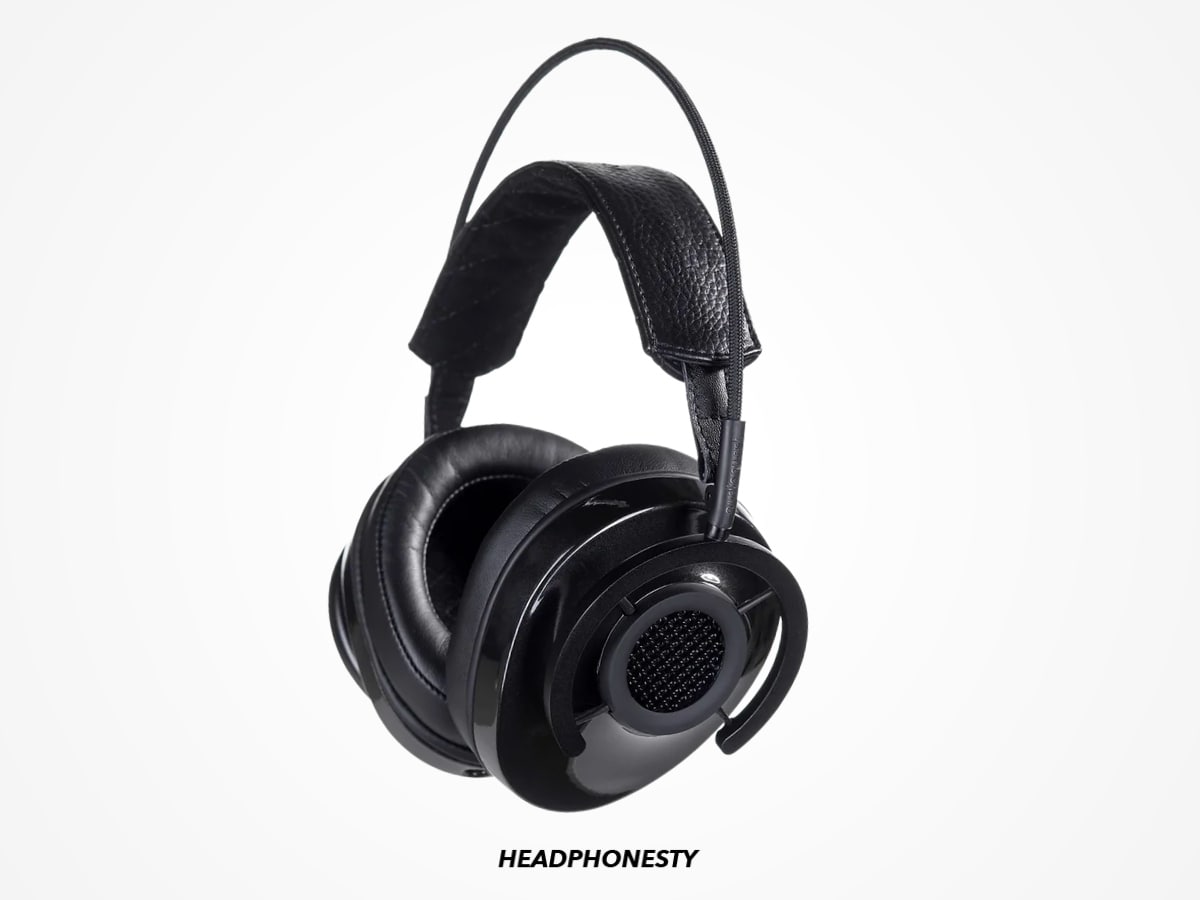
- Good bass
- Solid stereo imaging
- Decent noise isolation
- Sound leakage
- Lacking variety
Semi-open headphones offer a mix of the pros and cons previously discussed for open-back and closed-back headphones. One benefit is that they balance the bassy seal of closed-back headphones with the spatial stereo imaging produced by open-back headphones. They also do a decent job of passively isolating outside noise.
However, they’re not as good at keeping noise in as they are at keeping it out. Like open-backs, semi-open headphones come with the issue of sound leakage. Additionally, semi-open headphones occupy a niche market space and don’t come in the same vast variety as closed-back and open-back headphones.
Open-Back and Closed-Back Headphones: Which Is Better?
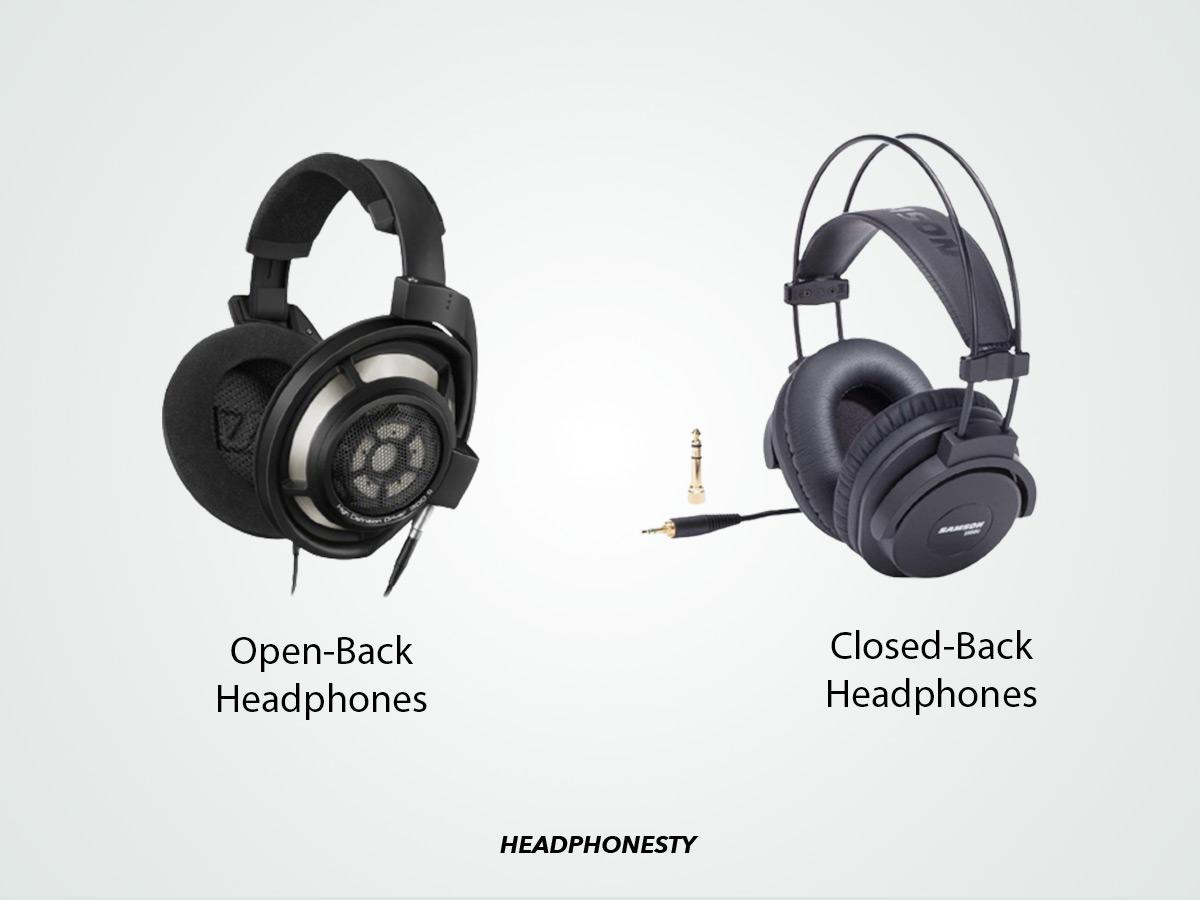
It’s impossible to say whether closed-back or open-back headphones provide an objectively “better” design. Instead, they both come with their own particular benefits and drawbacks. Some listeners will prefer the privacy afforded by closed-backs, while others might fall in love with the wondrous stereo imaging offered by open-backs.
Which Design Should You Buy?
Now that we’ve established the pros and cons of open and closed-back headphones, let’s look at some examples of when you might choose one design over the other.
When to buy open-back headphones
- For private listening: If you’re at home or working alone in a studio, the audio leakage of open-back headphones won’t be an issue.
- For quiet surroundings: The lack of passive noise cancellation won’t let you enjoy your audio if the world around you is too loud, but if your surroundings are quiet, then ambient noise won’t interfere with your music.
- For clear and vivid music listening: If you’re an audiophile, then open-back headphones will interact with the room around you to produce immersive audio with a wide and varied soundstage.
- For producing music: Open-back headphones provide a realistic sound, so you can hear what you’re making with more precision and separation.
- For Hi-Res audio: The wider soundstage of open-back headphones will let you enjoy Hi-Res audio in more detail.
- For breathability: If you struggle with clammy and constricting headphones, open-back designs will be more comfortable, especially over longer periods.
Recommendations for open-back headphones
When to buy closed-back headphones
- For public listening: If you plan to listen to your audio in public, whether while sitting in a cafe or using public transport, closed-back headphones will keep your audio private and make sure you aren’t annoying the people around you.
- For study or work: The passive noise cancellation of closed-back headphones will block out ambient sound and help you focus.
- If you’re a studio musician: Musicians will usually wear headphones while recording or performing. Using closed-back headphones will prevent bleed from pre-recorded tracks being picked up by your mic.
- If you’re a DJ: Environments like clubs and parties are loud and can start to damage your hearing if you’re spending a lot of time with that level of noise exposure. The passive noise cancellation of closed-back headphones will help muffle the sound by up to 30 dB. Here are our favorite DJing headphones.
- For casual listening: Closed-back headphones are available in more styles and usually at a cheaper price point, making them more accessible than open-back headphones for casual listeners.
- For working out (at the gym): While your ears might get sweaty if you work out with closed-back headphones, they won’t leak your audio and annoy everybody around you. Additionally, passive noise cancellation will help block out the noise of the gym and let you focus on your music and workout.
Recommendations for closed-back headphones
Why Do Audiophiles Like Open-Back Headphones?
Audiophiles tend to gravitate towards open-back headphones not only for their vivid qualities and large soundstages, but also because of headphone market conditions.
Most of the highest-end headphones adhere to an open-back design. Manufacturers aren’t worried about accommodating for privacy and sound leakage when it comes to ultra-high-end pairs, knowing full well that their target audience is concerned with sound quality above all else.
So, audiophiles like open-back headphones because the most elite models are usually open-back. And in a self-perpetuating twist, the manufacturers of these high-end headphones know that audiophiles like open-back designs.
FAQ
- How do I know if my headphones are open-back or closed-back?
- Are closed-back or open-back headphones louder?
- Who uses semi-open headphones?
How do I know if my headphones are open-back or closed-back?
If you cannot see the drivers through the back or the sides of your headphone cups, you likely have closed-back headphones.
Are closed-back or open-back headphones louder?
Neither closed nor open-back headphones are inherently louder, but listeners may perceive open-back headphones as being quieter due to their lack of noise isolation.
Who uses semi-open headphones?
Semi-open headphones are most commonly used by mixing engineers and other audio professionals.
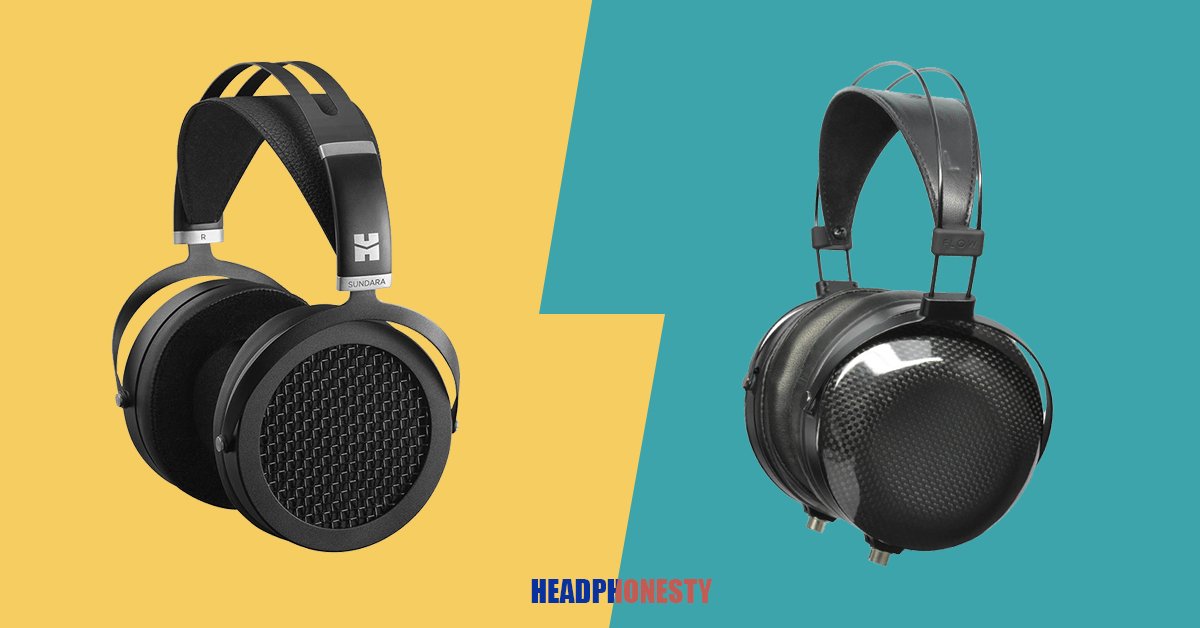
Well written summary. Thanks
Very helpful!
Very helpful
I like your summary, it’s been very informative.
I’m in the market for headphones and I now know that a closed back is the only option for me. I wear hearing aids on both ears, and I know I will need headphones with large enough ear cups to accommodate my ears plus my hearing aids.
Do you have any suggestions on which headphones I should be looking at?